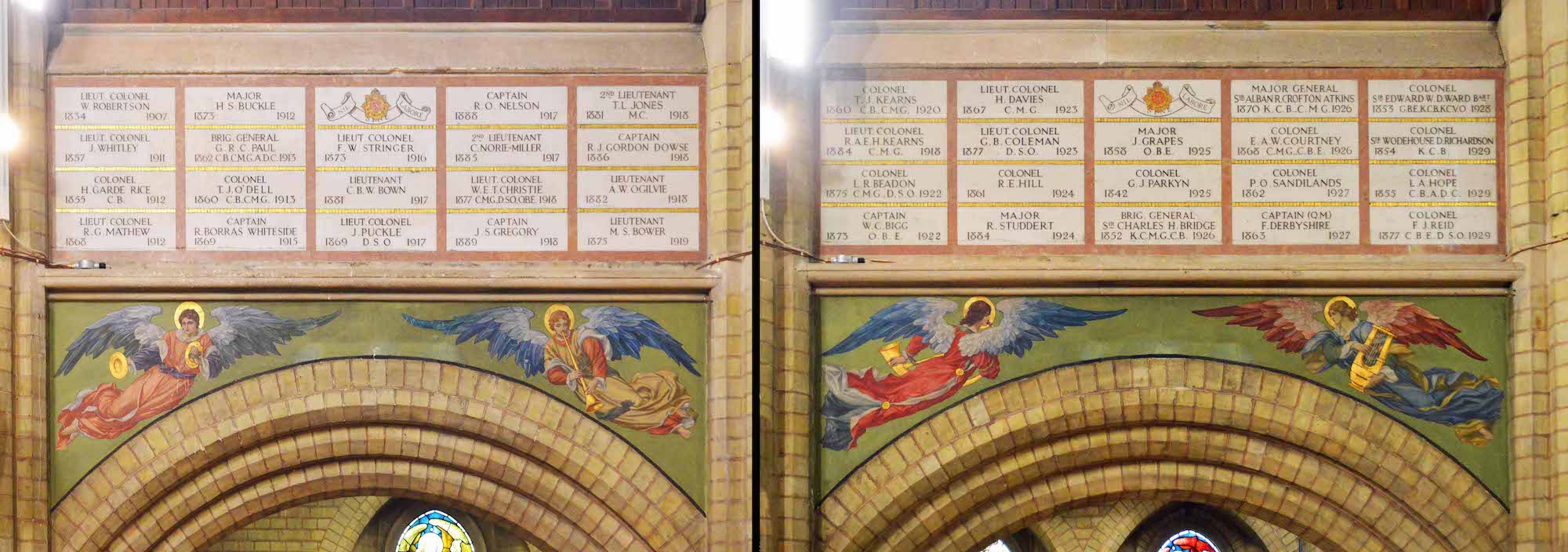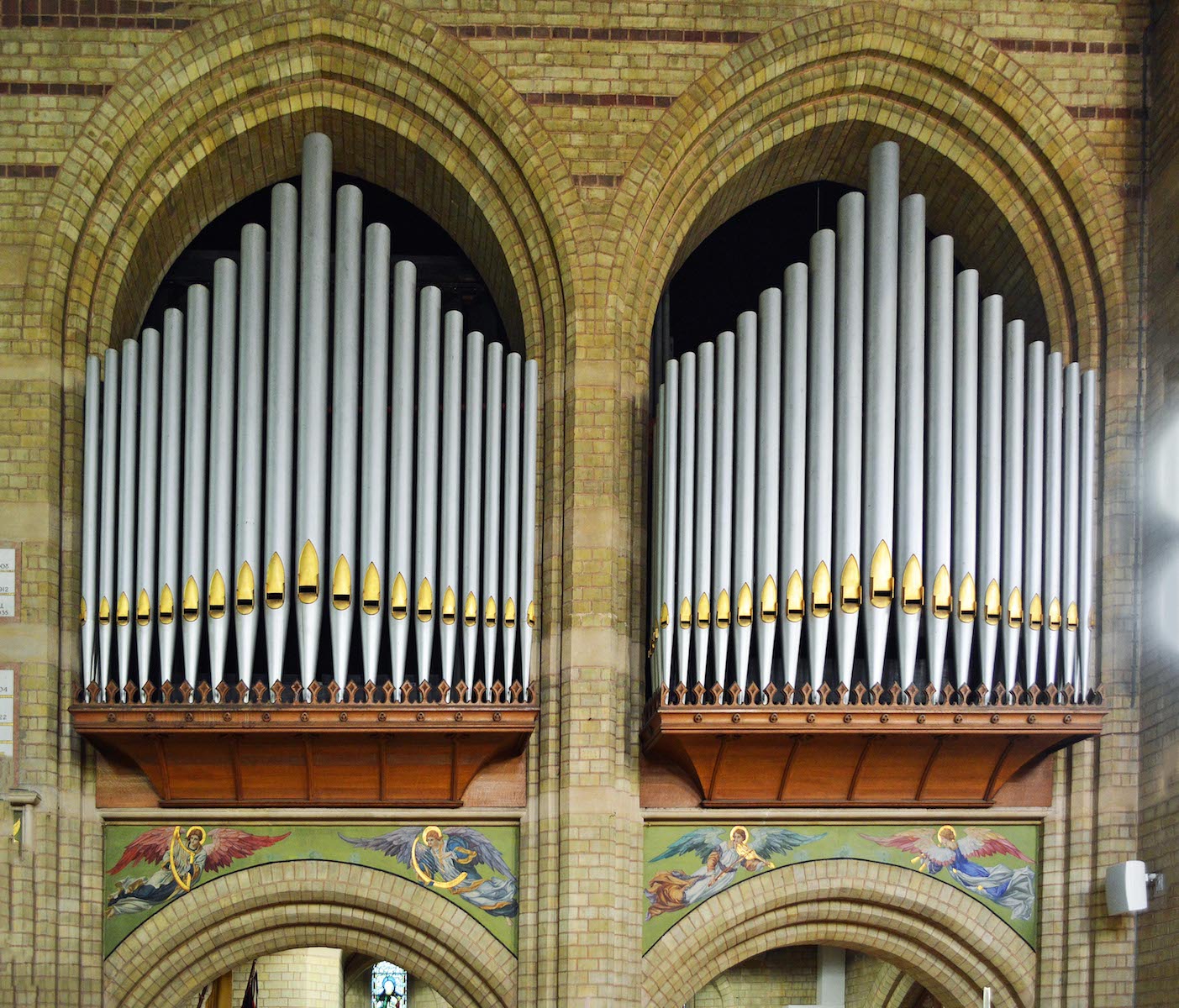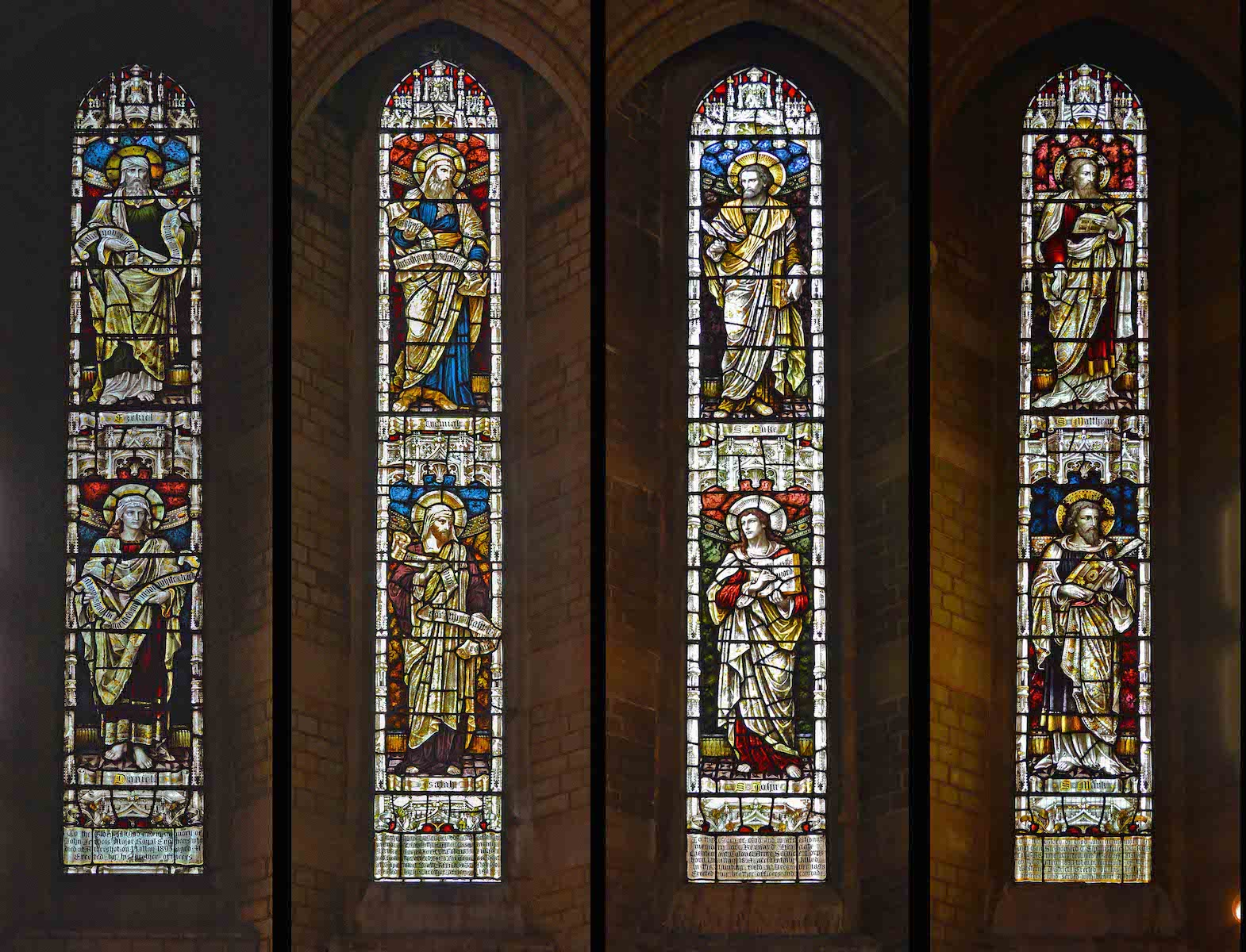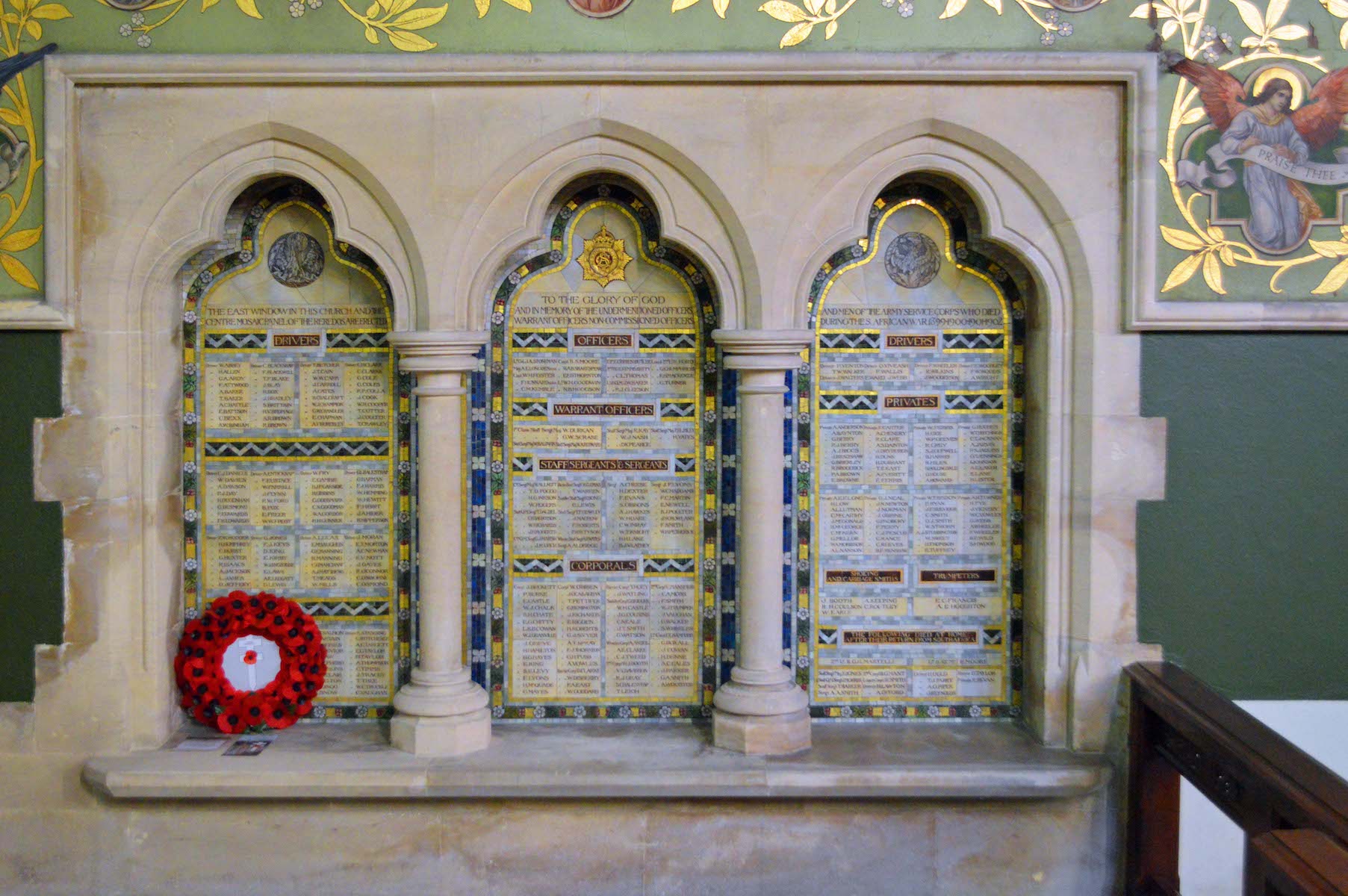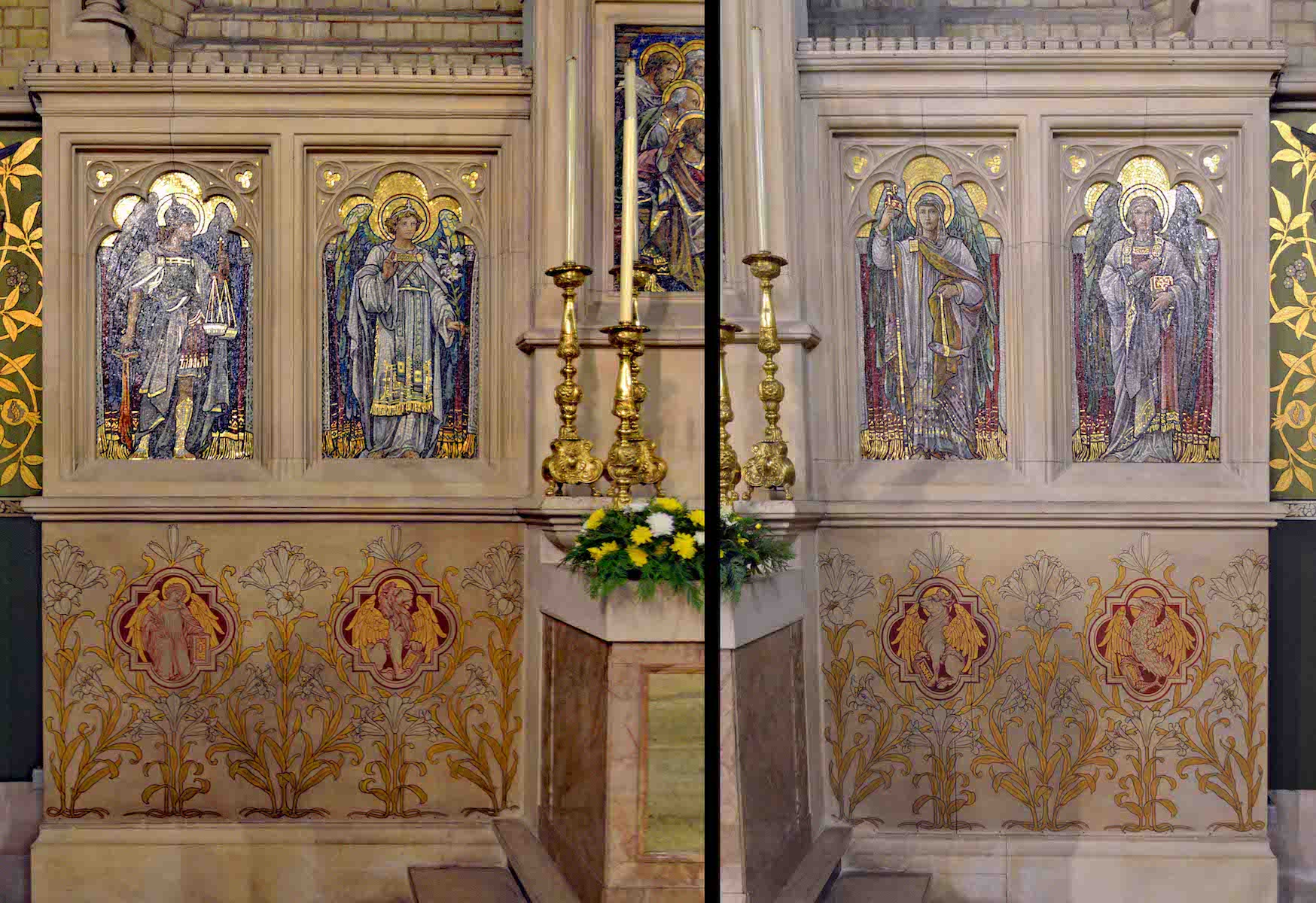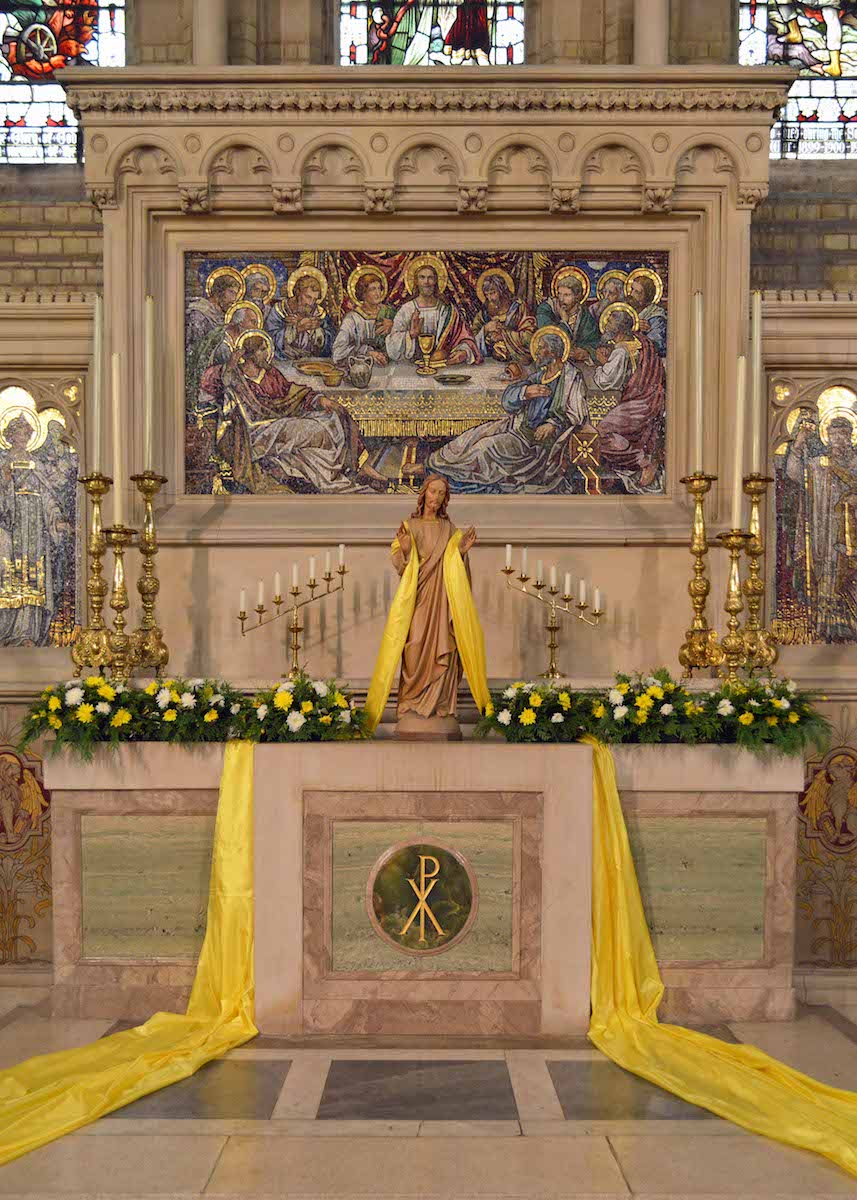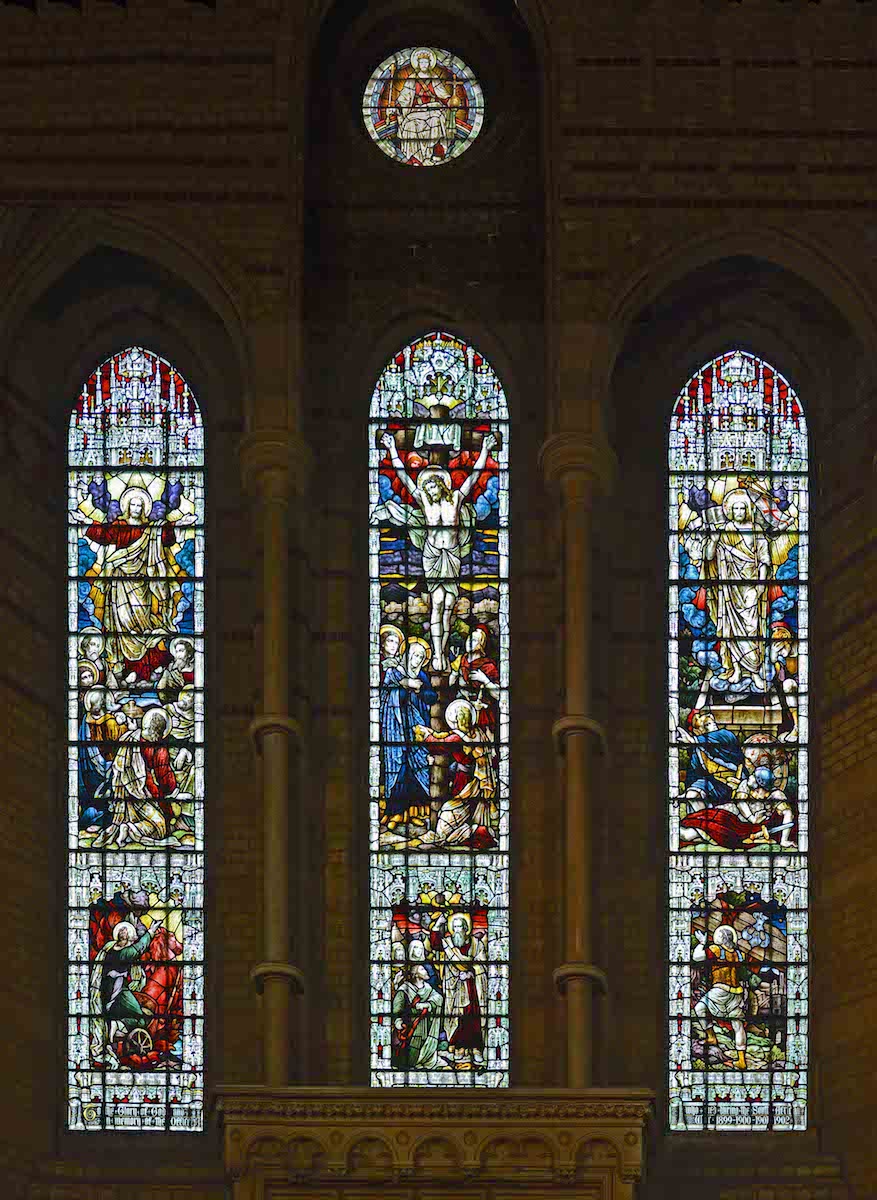61. LECTERN, CATHEDRA AND FONT
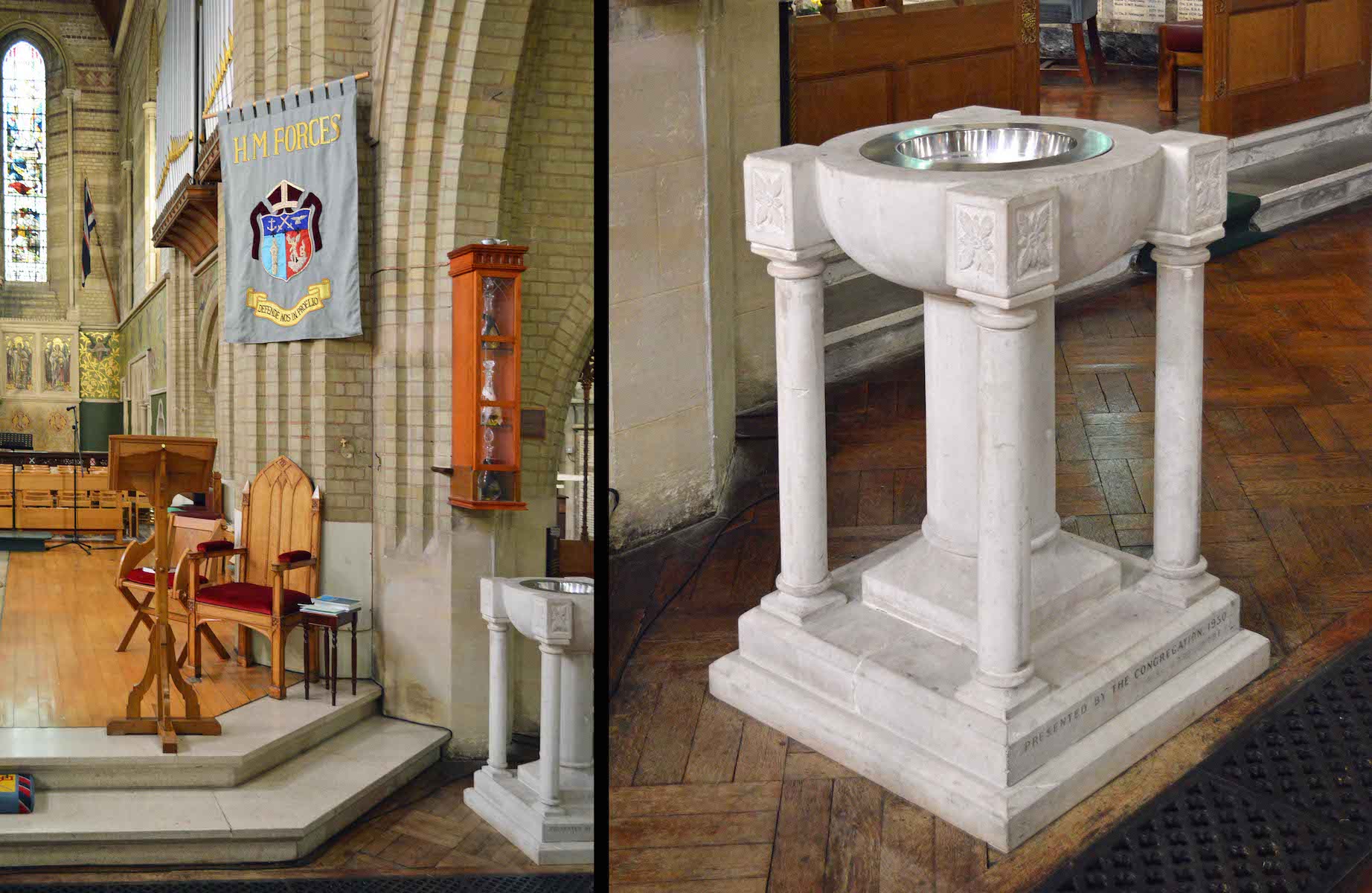
The rather ordinary lectern stands in front of a rather ordinary wooden chair which is in fact the Bishop’s seat or cathedra. Its distinctive feature is the banner above, which features a crest, and the motto which is the second line of the prayer: Sancte Michael Archangele, defende nos in proelio (defend us in battle) ... . A second simple baptismal font stands to the right. Above this is a cabinet containing flasks of the three Holy Oils. INDEX
62. BELL, CHAIR AND CROSS
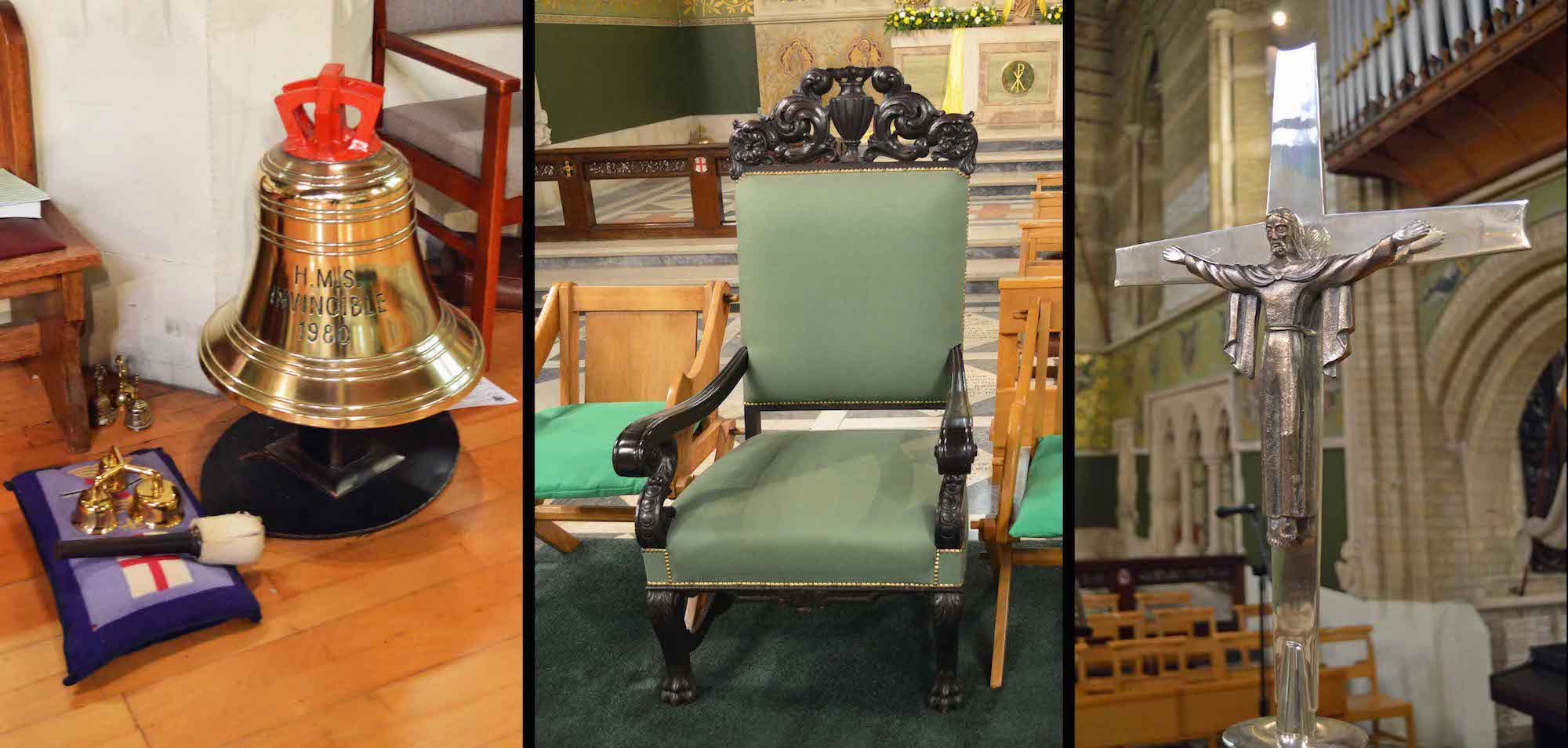
Moving up past the nave altar we come to another three items. At left is a ship’s bell belonging to HMS Invincible (1980). HMS Invincible (R05) was a light aircraft carrier, the first of three in the Invincible class. She served from 1980 to 2005 and was scrapped in Turkey in 2011. The date on the bell is a mystery. The celebrant’s chair looks to be more comfortable than the cathedra! At right is a silver crucifix with Christ risen and victorious.
63. NORTHERN ARCHES
To the North of the chancel are two curved arches leading through to the Lady Chapel. Immediately above each arch is a painting of angels making music, and above this a panel of memorial tiles commemortaing Officers who died in WWI.
64. ORGAN PIPES AND ARCHES
To the South we have similar arches surmounted by painted angels, and organ pipes above. The main organ was built and installed by Hele & Co of Plymouth in 1908 at a cost of £950. However, despite a comprehensive refurbishment this organ is no longer used mainly because of asbestos being found in the organ pipe gallery.
65. CENTRAL AISLE FLOOR PLAQUES
On the central aisle leading up to the high altar are three diagonal floor tiles. Each of the tiles contains a memorial related to the Royal Army Service Corps, with even the sanctuary and chancel of the Cathedral dedicated in memory.
66. SANCTUARY
We finish our exploration in the sumptuous Cathedral sanctuary. We observe another collection of memorials, the stained glass windows on all walls, the colourful wall painting and mosaic reredos, and the magnificent high altar. The communion rails are of interest in that they commemorate those of the RASC who died in World War II. They are decorated with the four emblems of the British Isles (the Rose, the Thistle, the Shamrock and the Daffodil), the arms of the national Patron Saints (SS George, Andrew, Patrick and David), and symbols of Christ’s Passion,
67. MEMORIAL TILES
Tablets in the sanctuary commemorate 376 men who died. A lasting impression left by a visit to this Cathedral is the absolute waste and futility of war.
68. NORTH AND SOUTH SANCTUARY WINDOWS
Very fine stained glass windows line the side walls of the sanctuary. Each of the two North facing windows portrays two Old Testament figures. The two South facing windows picture the Four Evangelists. Pictured clockwise, from left we have: • Ezekiel and Daniel; • Jeremiah and Isaiah; • St Luke and St John; • St Matthew and St Mark.
69. REMEMBRANCE NICHES
Within these three niches are listed a great number of names of members of the Royal Corps of Transport who died in action.
70. NORTH AND SOUTH REREDOS
Back of the high altar are five mosaic panels – one at the centre and two on either side. We see here the four side panels picturing four angels, or perhaps the four archangels with St Michael at left.
71. HIGH ALTAR
The central mosaic panel pictures the Last Supper. In front is a figure of Christ, large candlesticks and two stands of seven candles. The altar bears the Chi-Rho symbol for Christ.
72. EAST WINDOW
The East Window over the altar is dedicated to the men of the Royal Army Service Corps who lost their lives during the Boer War of 1899–1902. The window depicts The Ascension, The Translation of Elijah, The Crucifixion, Moses and the brazen serpent and Samson carrying off the Gates of Gaza. This completes our tour of the Aldershot cathedral.
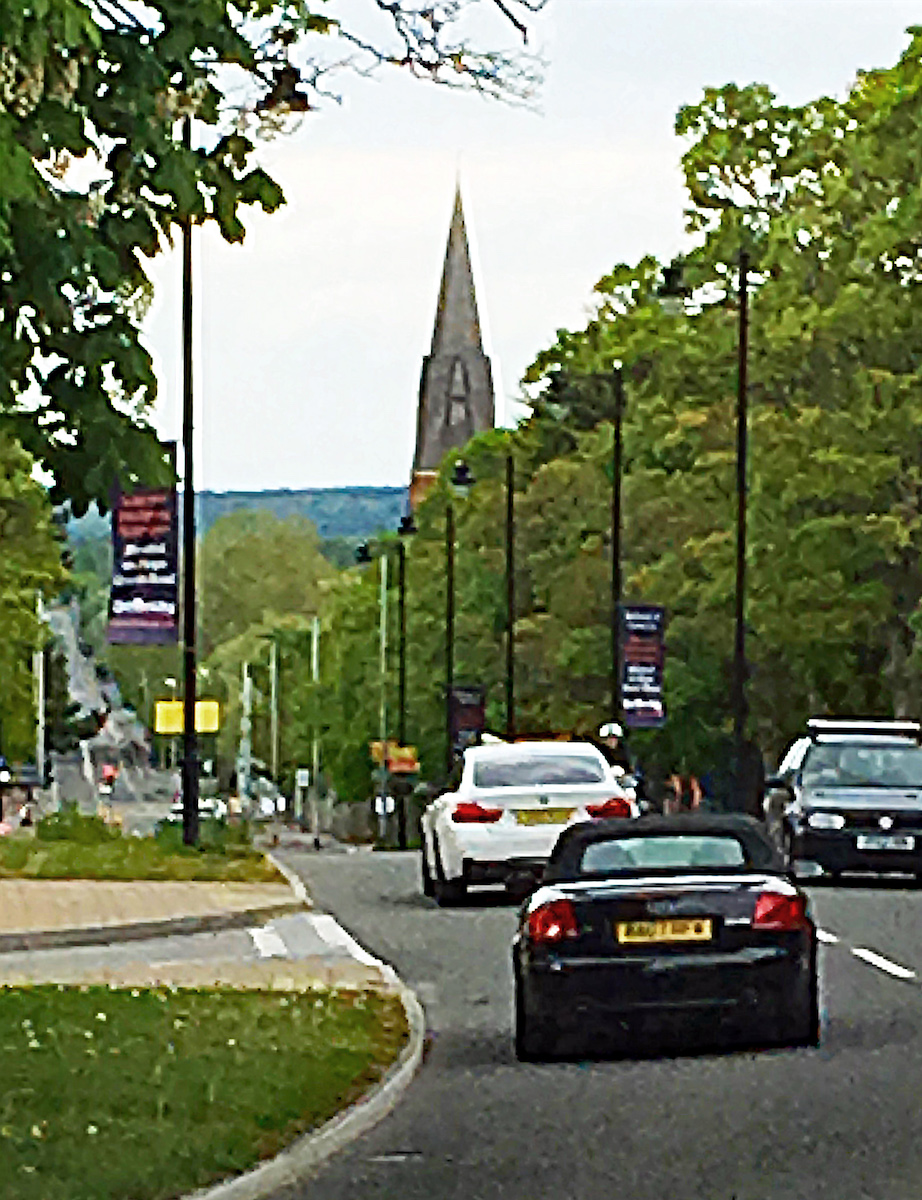
Text
CONCLUSION
I hope you have enjoyed visiting Aldershot Cathedral with me. It is an unusual and inspiring cathedral in many ways.
I mentioned earlier the mystery about the transepts. Examination of the satellite and exterior views shows that the two front side chapels have been built into the transepts. There is a verger’s office above on the North side, but on the South side the space is unused.
Iam happy to receive constructive comments or corrections concerning this website. The best websites are the ones which have no errors! I am grateful to my wife Margie who has proof-read these pages.
The Cathedral does not appear to have its own website.
The photographs which appear on this site can also be found in higher resolution at:
https://www.flickr.com/photos/paulscottinfo/sets/
Paul Scott Site created 6 / 2019

